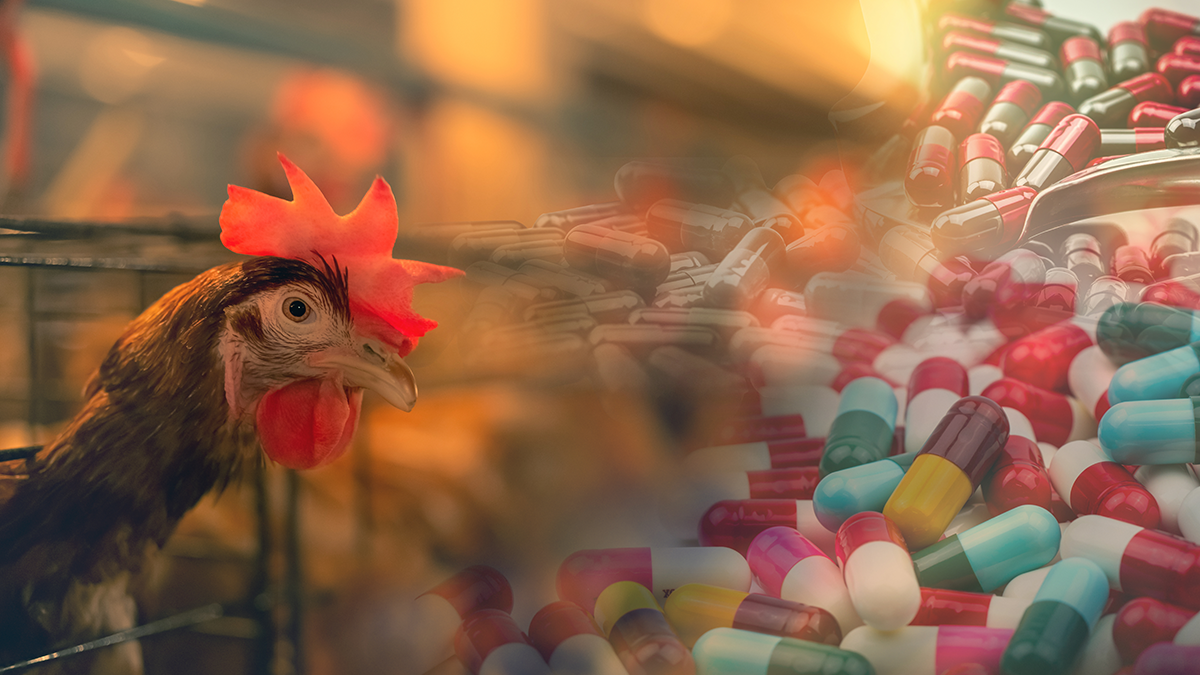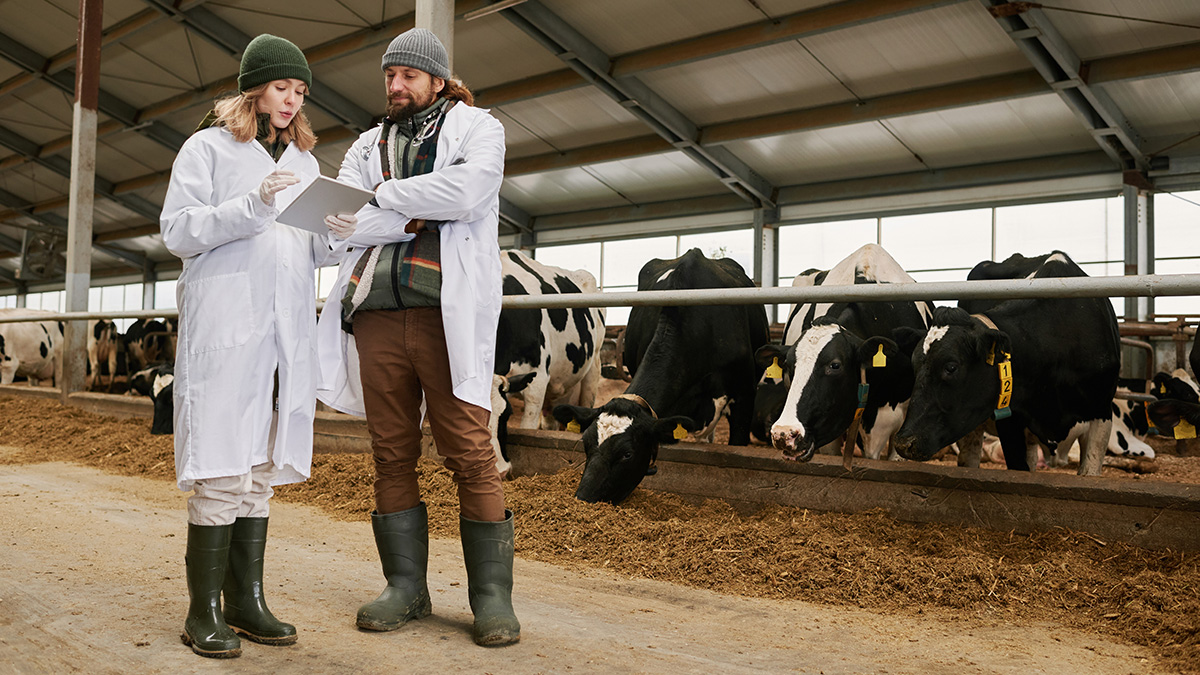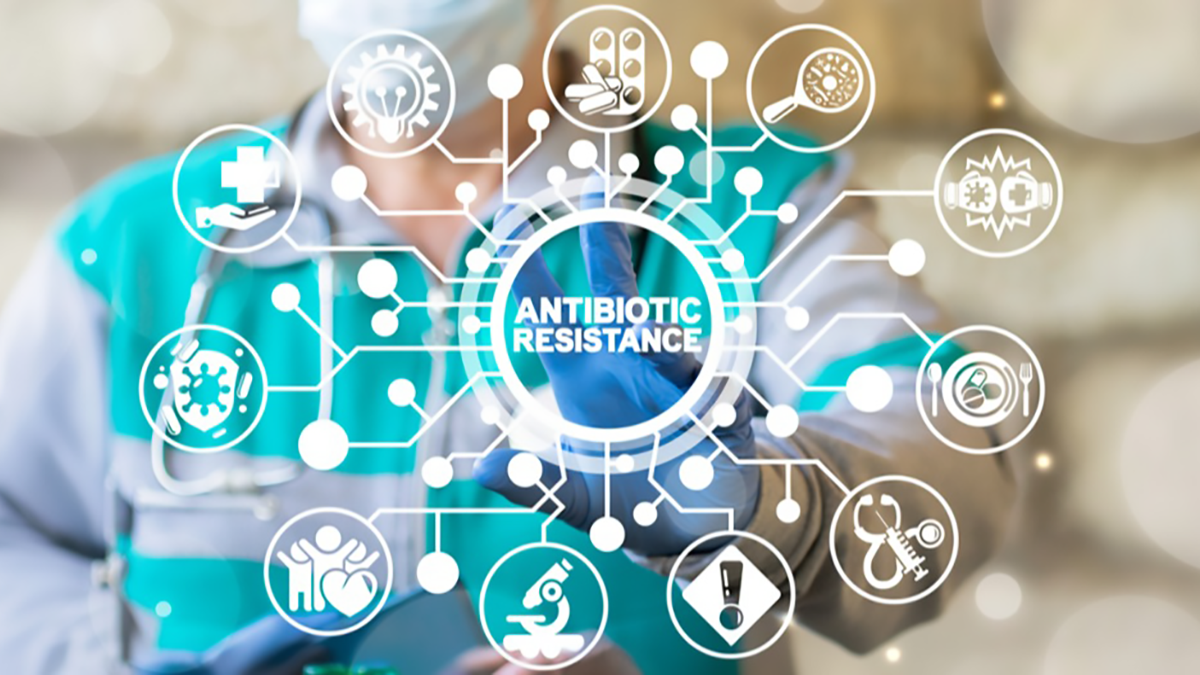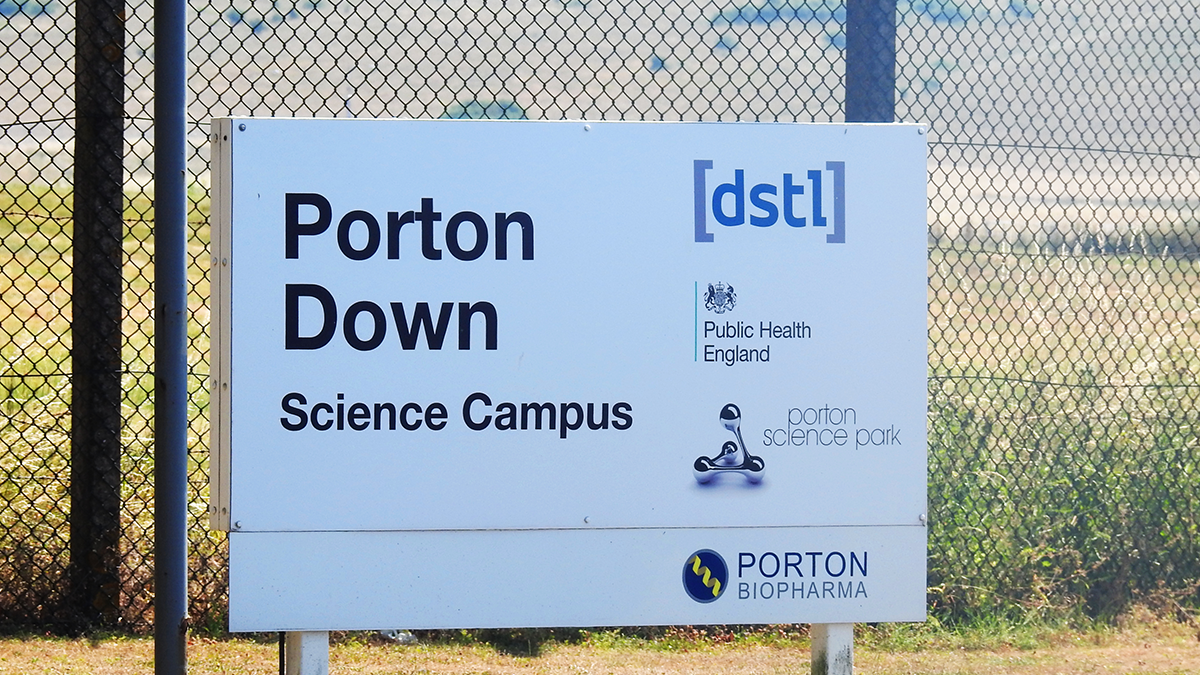Tackling the crisis of antimicrobial resistance from farm to fork

Part 2: The threat from antimicrobial resistance and what we can do about it.
For part 2 of our focus on AMR, we consider how governments and other stakeholders are responding to the threat through regulation, collaboration and innovation in treatments and surveillance techniques.
A key feature of the international response to-date – including within Ireland – has been to reduce the use of antibiotics within the food chain, particularly those drugs that are considered critically important to human health.
Caroline Garvan, Senior Superintending Veterinary Inspector at the Department of Agriculture, Food and Marine, notes how Ireland has achieved a significant reduction in sales of veterinary antibiotics of around 28% since 2020 with a more than 50% reduction in sales of drugs of last resort for human health.
This has required a strategic approach as set out in Ireland’s National Action Plan (iNAP) on AMR. The first iNAP ran from 2017 to 2021 and focused on raising awareness about AMR, providing leadership, strengthening governance, building specialist capacity, enhancing surveillance, and forging networks between the human, animal and environmental sectors.
iNAP 2 (2021-2025) has built on that platform by maintaining a focus on surveillance of antibiotic resistance and usage, while also working to reduce the spread of infection and disease, optimise the use of antimicrobials in human and animal health, and promote research and investment in new medicines, diagnostic tools, vaccines, and other interventions.
“We've done a lot to try and mitigate the need to use antibiotics, first and foremost. But at the same time, there is a need in certain cases to use antibiotics to protect animal health and welfare. No one is saying you can't use them, but what we've said since this action plan is that we need to question why are we using them in the first place”
- Caroline Garvan, Senior Superintending Veterinary Inspector at the Department of Agriculture, Food and Marine
Garvan says the reduction in antibiotic usage has been achieved by getting buy-in from a wide range of stakeholders within the food and agriculture sector, from farmers and veterinarians through to food businesses operating further down the supply chain. Visibility of data on antibiotic usage has improved significantly since the start of this year thanks to the mandatory use of a national veterinary prescribing system which provides full oversight of how antibiotics are being prescribed in food-producing animals in Ireland, who is prescribing them and who is using them.
“That then allows us to target farm-specific interventions,” explains Garvan.

The Irish Government has provided funding for health advisory visits whereby a vet is paid to go onto the farm and help the farmer develop an action plan around disease control and better animal health. “We've done a lot to try and mitigate the need to use antibiotics, first and foremost,” says Garvan. “But at the same time, there is a need in certain cases to use antibiotics to protect animal health and welfare. No one is saying you can't use them, but what we've said since this action plan is that we need to question why are we using them in the first place?”
Regulatory measures
Ireland’s activity has in part been driven by a push at EU level to tackle antibiotic usage. Targets originally outlined in the EU’s Farm to Fork Strategy seek a 50% reduction in the overall quantities of antimicrobials sold across the EU by 2030, with 2018 as the reference year.
To help achieve the goal, from January 2022 new rules have placed restrictions on the use of antibiotics prophylactically (to prevent disease in healthy animals) and metaphylactically (to treat a group of animals to prevent the spread of disease).
The UK Government has followed the EU’s lead and in May last year new legislation came into force banning the routine use of antibiotics on farm animals and restricting prophylactic use of antibiotics to “exceptional circumstances”. Campaigners, however, have warned that loopholes and weaknesses in the UK legislation and how it is interpreted could allow the overuse of antibiotics on farms to continue.
The Alliance to Save our Antibiotics (ASOA), whose members include the likes of Compassion in World Farming and the Soil Association, has said that unlike the EU legislation, the UK Government has refused to ban the practice of feeding prophylactic antibiotics to groups of animals where no animals have been diagnosed as sick.
The UK Government can, with some legitimacy, point to its success to-date in reducing antibiotic usage in food producing animals via a collaborative and voluntary approach.
Data for 2022 contained in the latest UK Veterinary Antibiotic Resistance and Sales Surveillance Report showed a 59% decrease in UK-wide sales of veterinary antibiotics intended for food-producing animals since 2014, while sales of the highest priority critically important antibiotics fell by 81% during the same period.
That makes the UK one of the lowest users of antibiotics across Europe, a transformation that has been achieved through a largely industry-led approach which aims to embed the principle of responsible antimicrobial stewardship within UK agriculture.
“Despite supermarkets having the strongest policies, they are generally only being applied to own-brand foods and branded foods. These can include imported meat, fish, dairy and eggs, which are not covered. Furthermore, the Alliance is concerned that supermarket supply chains are not yet complying with new legislation which prohibits using antibiotics to prop up poor farming practices.”
- Cóilín Nunan, ASOA
Industry collaboration
Collaborations such as the Responsible use of Medicines in Agriculture (RUMA) Alliance and the Food Industry Initiative on Antimicrobials (FIIA) have played a key role in building links across industry and government to ensure stakeholders are bought into the mission of using antibiotics responsibly. As with Ireland, accurate measurement of antibiotic use and support for farmers to identify and implement good animal husbandry practices have been leading priorities.
Yet while antibiotic use is falling, campaigners say greater reductions are needed and have called on large buyers of meat and dairy products to support a renewed push to get the numbers down.
In 2023, ASOA carried out a survey of the UK’s ten leading catering companies which between them provide meals to thousands of schools, universities, colleges and healthcare establishments. It found that five companies had no publicly available antibiotic policy and of the remaining five that did none prohibited the routine use of antibiotics or collected any data on antibiotic use in their supply chains.
The policies of the UK’s biggest food retailers compare favourably with their catering counterparts.
By 2021 all of the leading supermarkets had a ban on most or all of their UK own-brand suppliers from using antibiotics for routine disease prevention. Many also have restrictions on the highest-priority critically important antibiotics and collect antibiotic-use data from their suppliers.
Yet there is no room for complacency.
“Despite supermarkets having the strongest policies, they are generally only being applied to own-brand foods and branded foods. These can include imported meat, fish, dairy and eggs, which are not covered. Furthermore, the Alliance is concerned that supermarket supply chains are not yet complying with new legislation which prohibits using antibiotics to prop up poor farming practices,” says Cóilín Nunan from ASOA.
Strengthening surveillance
Like Ireland, the UK has developed a sequential set of action plans aimed at tackling the threat from AMR. The latest plan, covering the period 2024 to 2029, is focused on restricting the unnecessary use of antimicrobials in humans and animals, strengthening the surveillance of drug resistant infections, and incentivising industry to develop the next generation of treatments.
Fully integrated surveillance initiatives that can track AMR infections and show how resistance emerges and spreads are considered key to understanding and mitigating the risk of AMR.

The Pathogen Surveillance in Agriculture, Food and Environment (PATH-SAFE) programme, a four-year cross government and UK-wide project, has been piloting the use of the latest DNA-sequencing technology and environmental sampling to improve the detection and tracking of foodborne human pathogens and AMR through the whole agri-food system from farm to fork.
A new data platform has been created that will allow for the analysis, storage and sharing of pathogen sequence and source data for Escherichia coli isolates, Salmonella enterica subspecies enterica, E. coli and Listeria monocytogenes collected from multiple locations across the UK by government departments and public organisations. The hope is that a single system will enable rapid identification and tracking of both food borne disease and AMR, improving public health and minimising the economic and environmental impact of outbreaks.
Although the PATH-SAFE programme has now ended, its work has fed into a number of cross-disciplinary projects all of which have AMR within their scope. These include the National Biosurveillance Network initiative, which aims to build a connected, cross-UK network to ensure biosecurity threats are detected and responded to more effectively.
Another key project is the third study of infectious intestinal disease in the UK (IID3), which is assessing the overall burden of IID in the UK and finding out its key causes.
Overseen by the UK’s Food Standards Agency and conducted by the University of Newcastle, the project aims to understand what proportion of infections are caused by AMR bacteria and how many of these infections are likely caused by foodborne diseases.
It is also seeking to discover what proportion of these infections are caused by AMR bacteria, which bacteria are most resistant and which antibiotics they are resistant to. To achieve this, researchers are using molecular diagnostic methods, like polymerase chain reaction tests, in order to detect different pathogens, as well as whole genome sequencing to discover more information about these pathogens.
Treatment options
A final area of focus for both the UK and Ireland is investment in treatment options. Garvan says Ireland has seen “a huge increase in the use of vaccines” to treat farm animals, especially pigs and poultry, sales of which are now greater than sales of antibiotics.

Research, meanwhile, has suggested there is potential for naturally occurring antibodies, captured from farm by-products such as the whey left over from milk processing and administered to animals through their feed, to fight infections in much the same way as antibiotics.
A 2018 study published in the Veterinary Research journal identified 2 antibodies with particularly strong potential as an alternative to antibiotics: immunoglobulins which can act as a barrier against infection, and peptides which can slow down the establishment of infection. Despite the promising results, the study authors concluded that antibody treatments would ultimately need to match the low cost, efficiency and ease of use of traditional antibiotics, as well as gain regulatory approval, in order to emerge as attractive alternatives in future.
What we can say for certain is that governments are taking the threat from AMR extremely seriously. For evidence, look no further than the investment made by the UK Health Security Agency at its Porton Down facility, where a full-scale replica hospital ward has been built to test different therapeutic approaches against multidrug resistant organisms which could ultimately reduce transmission of antibiotic resistant infections.
Innovation, collaboration and regulation – three key pillars in the ongoing fight to keep our agricultural supply chains secure, our food safe, and to preserve the lifesaving power of antibiotics.



